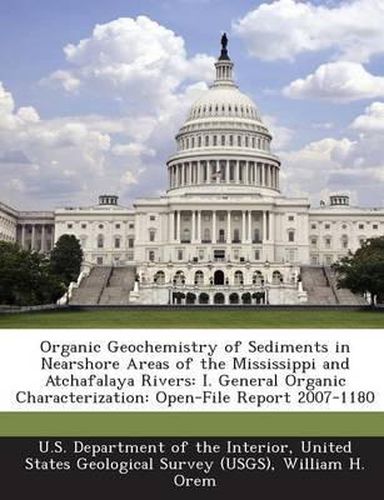Readings Newsletter
Become a Readings Member to make your shopping experience even easier.
Sign in or sign up for free!
You’re not far away from qualifying for FREE standard shipping within Australia
You’ve qualified for FREE standard shipping within Australia
The cart is loading…






This report presents results on the general organic characteristics of sediment cores collected from the coastal zone of the Mississippi River system, including distributions of the important nutrient elements (C, N, P, and S). This was part of a larger study conducted from 2001-2005 to examine the delivery of sediment-associated contaminants to the Gulf of Mexico by the Mississippi River system, funded by the USGS Coastal and Marine Geology Program. Companion reports emphasize organic contaminants (Rosenbauer and others, 2006), and metals (Swarzenski and others, 2006). The level of contamination within the deltaic system of the Mississippi River system was determined through the collection of sediment cores from interdistributary bays, and offshore in the Gulf of Mexico, including the zone of hypoxia. Results provide the basis for reconstructing contaminant inventories from which to develop historic perspectives on nutrient loading and hypoxia, and to better understand how sediment-hosted contaminants either directly or indirectly move through biota and ultimately affect ecosystem health. Concentrations of C, N, P, and S in sediments varied by a factor of 10 between sites, and in down core profiles. Nearshore cores collected in 2001 proved to have erratic downcore C, N, P, and S profiles and sediment deposition rates, suggesting a high energy regime controlled more by variability in river flow rather than by geochemical processes and reactions within the system. These results focused further coring activities further offshore. Atomic C/N ratios suggest that organic matter deposited at all sites is a mix of microbial (algal) and terrestrial (vascular plant) remains, but with algal material dominant. Concentrations of total sulfur in sediments from cores in the zone of hypoxia were often higher than those in nearby zones with oxic water columns. Corresponding atomic C/S ratios were typically lower in sediments from sites in the zone of hypoxia compared to nearby sit
$9.00 standard shipping within Australia
FREE standard shipping within Australia for orders over $100.00
Express & International shipping calculated at checkout
This report presents results on the general organic characteristics of sediment cores collected from the coastal zone of the Mississippi River system, including distributions of the important nutrient elements (C, N, P, and S). This was part of a larger study conducted from 2001-2005 to examine the delivery of sediment-associated contaminants to the Gulf of Mexico by the Mississippi River system, funded by the USGS Coastal and Marine Geology Program. Companion reports emphasize organic contaminants (Rosenbauer and others, 2006), and metals (Swarzenski and others, 2006). The level of contamination within the deltaic system of the Mississippi River system was determined through the collection of sediment cores from interdistributary bays, and offshore in the Gulf of Mexico, including the zone of hypoxia. Results provide the basis for reconstructing contaminant inventories from which to develop historic perspectives on nutrient loading and hypoxia, and to better understand how sediment-hosted contaminants either directly or indirectly move through biota and ultimately affect ecosystem health. Concentrations of C, N, P, and S in sediments varied by a factor of 10 between sites, and in down core profiles. Nearshore cores collected in 2001 proved to have erratic downcore C, N, P, and S profiles and sediment deposition rates, suggesting a high energy regime controlled more by variability in river flow rather than by geochemical processes and reactions within the system. These results focused further coring activities further offshore. Atomic C/N ratios suggest that organic matter deposited at all sites is a mix of microbial (algal) and terrestrial (vascular plant) remains, but with algal material dominant. Concentrations of total sulfur in sediments from cores in the zone of hypoxia were often higher than those in nearby zones with oxic water columns. Corresponding atomic C/S ratios were typically lower in sediments from sites in the zone of hypoxia compared to nearby sit